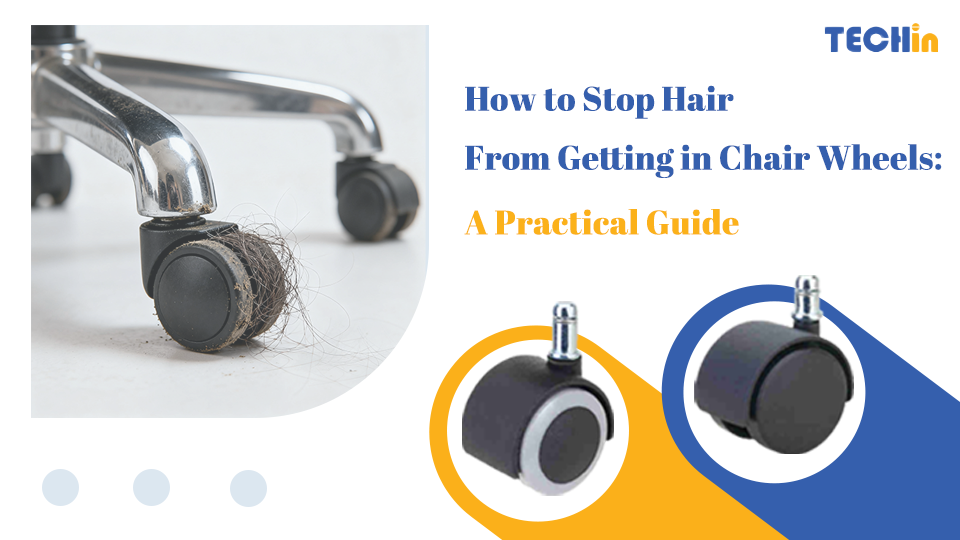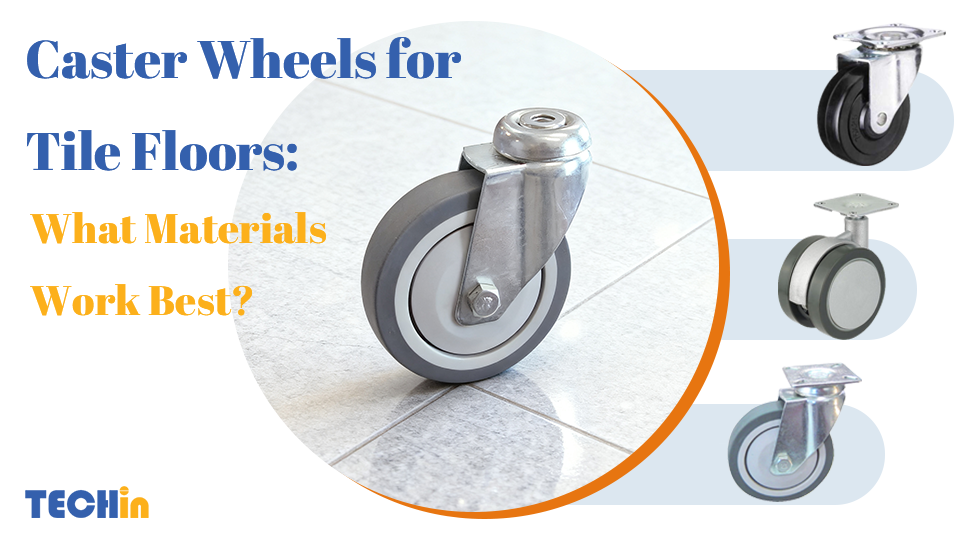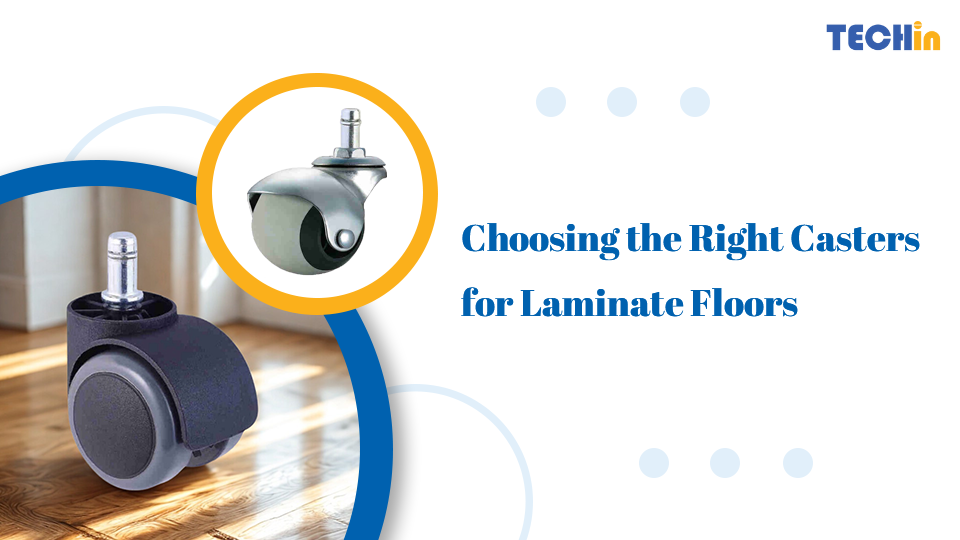It’s a question we hear all the time: “Can I just grab any caster wheel and expect it to fit?” It seems like it should be simple, but this assumption can lead to frustration, wasted money, and project delays. Whether you’re outfitting an industrial cart or just replacing a wheel on an office chair, knowing the facts is essential.
Let’s get straight to the point: caster wheels are not universal. A successful fit hinges on four key things: the mounting system, the wheel material, the size, and the load capacity. An industrial plate caster won’t work on an office chair, and a small nylon wheel will fail under a heavy load. Understanding these differences is what separates a smart purchase from a costly mistake.
Let’s walk through everything you need to know—from types and materials to sizing and load capacity—so you can make the right call.
1. What are Caster Wheels?
First, a quick definition. A caster wheel is simply a wheel mounted in a housing that allows it to be attached to the bottom of a larger object to make it mobile. Think of everything from shopping carts and tool chests to hospital beds and heavy machinery—casters are what get them moving.
The complete assembly includes the wheel itself plus the mounting hardware (like a plate or a stem), which is designed to connect to different types of equipment.
2. What Are the Different Caster Mount Types?
The mounting type is probably the #1 reason casters aren’t interchangeable. If the mount doesn’t match, nothing else matters. Here are the main types:
– Plate Mounts
These have a flat, rectangular plate with four (or sometimes more) bolt holes. You secure them directly to a flat surface, making them incredibly sturdy for industrial and heavy-duty gear.
– Stem Mounts
This type uses a single post, or “stem,” that pushes into a socket on the equipment. This is the standard for office chairs, furniture, and many medical devices.
– Threaded Stem Mounts
This is a variation of the stem mount where the post is threaded like a bolt, allowing you to screw it into place for a tight, secure connection.
– Bolt Hole Mounts
Also known as a “hollow kingpin” caster, this type has a hole through the center of the swivel mount. A bolt is passed through it to attach it to the equipment.
➡️ Your first step should always be to identify and measure the mount. This is non-negotiable for a successful replacement.
3. How Do Wheel Materials Affect Performance?
The wheel’s material dictates how it will behave in its environment. It affects everything from noise level to floor protection and overall durability. Here’s a look at the common options:
– Nylon
Tough, strong, and resistant to wear. A great choice for smooth concrete floors, but it can be loud and may mark up softer surfaces.
– Rubber
The quiet operator. Rubber offers a cushioned ride, protects floors, and handles uneven surfaces well. Its main drawback is that it can wear down more quickly.
– Polyurethane (PU)
Often the best of both worlds. It’s as durable as plastic but offers the quiet, floor-safe properties of rubber. It’s a versatile choice for almost any indoor surface.
– Thermoplastic Rubber (TPR)
A high-performance option that’s quiet, non-marking, and resistant to chemicals and oils. You’ll often find TPR wheels in institutional and medical settings.
The right material depends entirely on your floor, your load, and your environment.
4. Why Load Capacity Matters for Caster Wheels
Every caster has a maximum weight it can safely support. This isn’t a guideline—it’s a critical safety limit. Overloading a caster is the fastest way to cause a catastrophic failure, which can damage your equipment, your floors, and even cause injuries.
For context:
- Light-duty office chair caster: Supports around 50kg
- Medium-duty trolley caster: Handles about 100-150kg
- Heavy-duty industrial caster: Can take 300kg or more
To calculate what you need, divide the total weight of your cart and its maximum load by the number of casters. Then, add a healthy safety margin to account for uneven floors and shock loading.
5. How Wheel Size Affects Compatibility and Performance
Caster wheel diameter plays a huge role in both fit and function. A larger wheel rolls more easily and can overcome obstacles, while a smaller wheel is more compact.
– Small Wheels (15-75mm)
Standard for office chairs and small furniture. They work well in tight spaces but can get caught in cracks or on rough terrain.
– Medium Wheels (100-150mm)
The workhorse for carts, dollies, and retail fixtures. They provide a good balance of maneuverability and smooth rolling.
– Large Wheels (200mm+)
Built for industrial environments. These wheels roll easily over debris, uneven floors, and thresholds without getting stuck.
➡️ Always confirm that the wheel diameter will fit your equipment’s frame and provide enough clearance to operate properly.
6. What are the Two Types of Casters?
Functionally, casters come in two primary styles that determine how your equipment moves.
– Fixed Casters (Rigid)
These are locked in a single orientation and only roll forward and backward. They are excellent for providing stability and keeping equipment moving in a straight line.
– Swivel Casters
These can rotate 360°, allowing for movement in any direction. This makes them perfect for equipment that needs to navigate tight corners and spaces.
It’s very common to use a combination of two fixed and two swivel casters to get both directional control and maneuverability.
7. Why Don’t My New Caster Wheels Fit?
So you ordered new casters and they don’t fit. It almost always comes down to a simple measurement error. Here are the usual suspects:
✔ The stem diameter or plate hole pattern is incorrect.
✔ You chose the wrong stem type (e.g., threaded instead of a smooth grip ring).
✔ The wheel is too large and is hitting the equipment frame.
✔ The mounting hole on your equipment is a different size.
Tip: Take 5 minutes to measure the old caster before you order. Measure the stem, the plate, the bolt pattern, and the wheel diameter. This simple step will save you a world of trouble.
8. Buying Tips to Choose the Right Caster Wheels
To make sure you get the right casters on the first try, follow this checklist:
✅ Get your measurements right: Stem, plate, bolt holes, wheel diameter.
✅ Confirm the weight requirements: Calculate your load capacity and add a safety factor.
✅ Match the material to the floor: Consider floor protection, noise, and debris.
✅ Verify the mount type: Make sure it’s an exact match for your equipment.
✅ Define your movement needs: Choose between fixed, swivel, or a combination.
✅ Work with a trusted supplier: Good suppliers can help you verify compatibility.
Summary
Caster wheels are specialized components, not universal parts. By taking the time to check the mounting type, size, material, and load rating, you can make an informed decision that ensures safety, performance, and longevity. When in doubt, always consult an expert.









